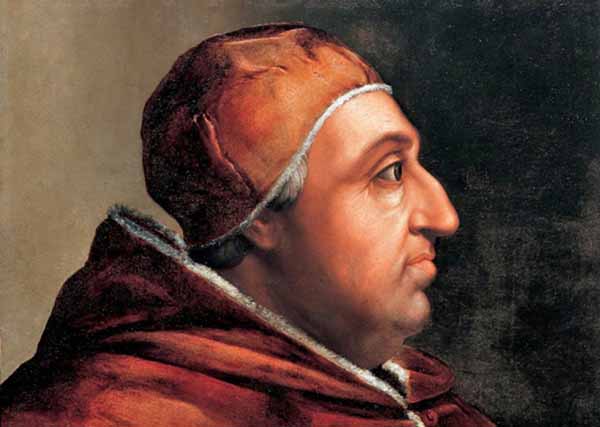The Borgias were the most infamous family of the Renaissance, best remembered for their climb to power through murder and corruption within the Papacy.
Calixtus III
The first was Lord Alfonso de Borja who was born in 1378. He was Alfonso V of Aragon’s private secretary, remained in royal service for forty-two years, before he was granted the bishopric of Valencia as a reward.
Alfonso moved to Naples when Alfonso V conquered the city in 1442. He eventually moved to Rome where he lived an austere, pious and modest life, despite his battles with increasingly painful attacks from gout. He was elected as Pope Calixtus III on the assumption he would not live very long. According to Christopher Hibbert, he was in such poor health that many doubted he would survive the arduous coronation ceremonies.
He bestowed favours on his relatives and fellow Spaniards, which caused widespread resentment. His nephew Rodrigo Borgia was given the Papal government’s most influential office, Vice-Chancellor of the Holy See.
Rodrigo Borgia
Rodrigo was devious, ruthless and greedy despite his intelliegence, tact and good humour. His career continued to flourish as he became richer and more influential. He had overwhelming charm, a lust for life and for beautiful women. He fathered at least three children to unknown mothers. He lived the lavish style of a Renaissance prince. He spent vast sums decorationg his palace with expensive tapestries and works of art. Rodrigo was determined to establish his own dynasty within Europe’s ruling elite.
He had a lengthy affair with courtesan Vannozza de’ Catanei. They produced four children: Cesare, Lucrezia and Jofrè. Vannozza benefited from the affair as she lived in a comfortable house in Rome. She held a considerable real estate portfolio, including three of Rome’s best inns. She did not play a major part in her children’s lives, as they were placed in the care of Rodrigo’s cousin and Spanish noblewoman, Adriana da Mila, from 1483.
Pope Alexander VI
Innocent VIII died on 25 July 1492, and Rodrigo was elected Pope on 11 August, after he bought many of the cardinals’ votes through bribes. He assumed the name Alexander VI.
He caused a scandal with his new teenage mistress, Guila Farnese, who was nearly fourty years younger. Johannes Burchard described her as the Pope’s Concubine whilst she was dubbed the “Bride of Christ” by the facetious Romans.
Alexander VI drew the line in 1493 which divided the New World into zones of colonisation for Spain and Portugal. He sent missionaries on Christopher Columbus’ second voyage to the New World.
He used his children in political alliances. His thirteen-year-old daughter Lucrezia was married to Giovanni Sforza. Alexander VI had the marriage annulled when he no longer needed an alliance with the Sforzas. Lucrezia married Alfonso of Aragon who was murdered. (Cesare was the chief suspect.) Finally, she married Alfonso I d’Este, Duke of Ferrara in 1502.
An envoy from the court of Ferdinand of Aragon and Isabella of Castile told the pope that they supported the Spanish claim to Naples. They proposed a double alliance. Alexander VI’s youngest son Jofrè married Sancia, Ferrante I’s son’s illegitimate daughter, and Juan Borgia should marry King Ferdinand’s cousin, Maria Enriquez.
The most crucial event of his reign was the French invasion. Ferrante I of Naples died on 25 January 1494 and his son, Alfonso II, succeeded him. The French king, Charles VIII, marched unopposed with 40,000 men through Italy. The French stopped in Rome where they intimidated the pope and the population by pillaging and plundering homes, before conquering Naples. Charles VIII was forced to return to France after defeat at the Battle of Fornovo.
Alexander VI’s harshest critic was Dominican friar Savonarola who repeatedly condemned the immorality of the Papal court from his pulpit in Florence. He declared the Bible alone was God’s authority. Alexander VI to tried to suppress the friar’s teachings. When that didn’t work, he tried unsuccessfully to make him a cardinal. Savonarola was eventually excommunicated on 12 May 1497. Savonarola was hanged on 23 May 1498.
Alexander VI was devastated when his son Juan’s body was found floating in the Tiber. His throat was slashed, his hands were tied, his neck had nine knife wounds and a heavy stone attached. Most suspected Cesare, who was appointed General in his brother’s place.
Cesare’s New Order
Cesare set out to create a new order for Italy, by recovering papal territory in the Romagna and the Marche, before taking Bologna (destined to be the capital) and Florence. He employed Leonardo da Vinci as his mapmaker and military engineer in 1502. By 1503, Cesare had defeated the papal states’ despots and the unruly Roman families. Italy’s first standing army was ready to defend the state.
He was ready for his next campaign in Tuscany, but his plans came to an abupt halt with the death of Alexander VI on 18 August, after he fell ill with malaria. He died from a stroke, after he received the last rites. His large body was stuffed into a narrow coffin the following day by porters.
Decline
Borgia power collapsed when Guiliano della Rovere was elected Pope Julius II. Cesare spent the rest of his life in and out of prison in Naples and in Spain until he died on 11 March 1507.
Lucrezia died on 14 June 1519, aged 39, in childbirth. She outlived her scandalous reputation to became a very respectable Renaissance duchess.
Sources:
- Review: The Borgias (Season 1)
- Bradford, Sarah, Lucrezia Borgia: Life, Love and Death in Renaissance Italy, Penguin, London, 2005
- Hibbert, Christopher, The Borgias, Constable & Robertson Ltd, London, 2009
- Ritchie, Robert, Historical Renaissance of the Renaissance, Checkmark Books, New York, 2004
- Strathern, Paul, The Artist, The Philosopher And The Warrior, Jonathan Cape, London, 2009
- Thomspon, Bard, Humanists & Reformers, A History of the Renaissance and Reformation, Wm B Erdmans Publishing Co, Grand Rapids Michigan, 1996





